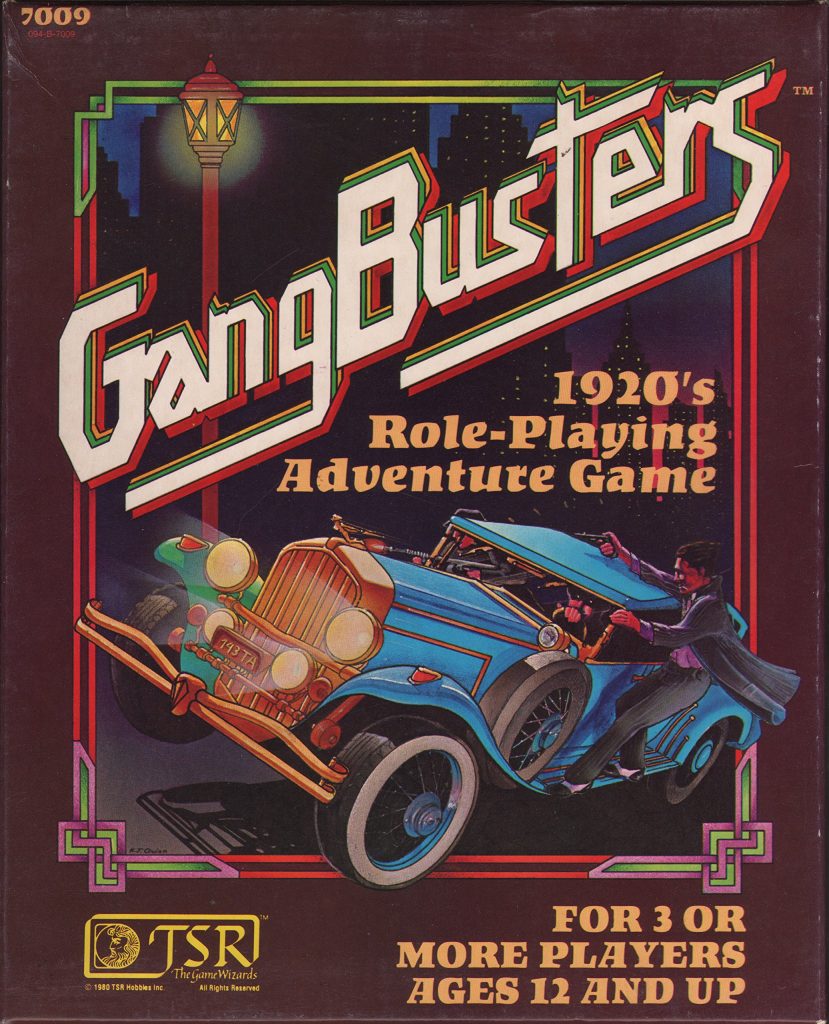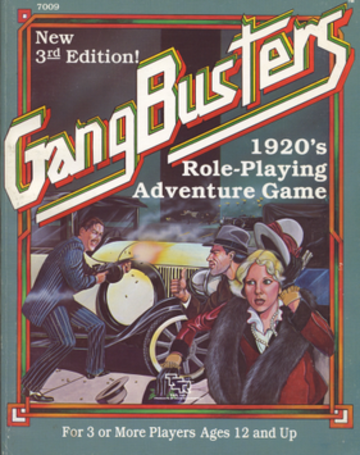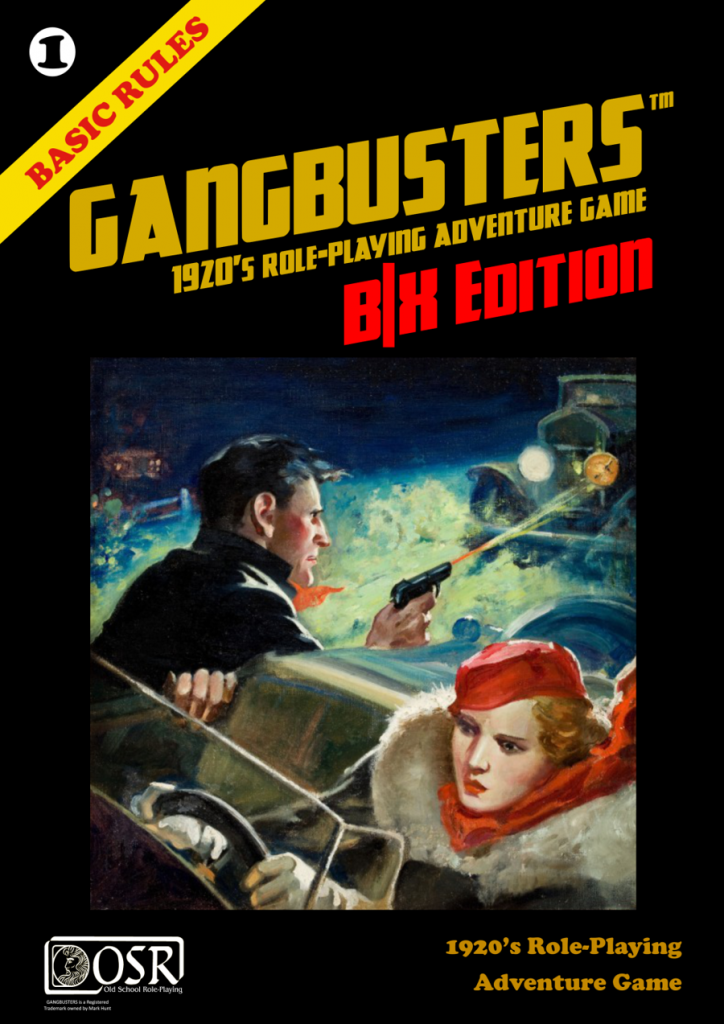Come and Get Me, Coppers … in Gangbusters
Though it no longer exists, the gaming company known as TSR, Inc., will always be associated with Dungeons & Dragons. However, TSR published a lot more tabletop roleplaying games than D&D. The science fiction game Star Frontiers to this day has a strong fan base, and the game Gamma World continues to find some love. That being said, many of TSR’s other RPGs tend to have been forgotten by a wider audience though they might still have a community of followers.
Such a game is Gangbusters.
Designed by Rick Krebs and originally published in 1982, Gangbusters takes place in the America of the 1920s and 1930s in the fictional Lakefront City. This is a game of cops and robbers, of gangsters and crime lords and Tommy guns. Historical figures such as Al Capone or Pretty Boy Floyd might make an appearance along with fictional characters like Sam Spade or Philip Marlowe, but players also have the opportunity to play the bad guys. Or they can play the good guys and join the side of the law. Or they can be something in between, like a newspaper reporter or photographer.
The original version of Gangbusters included multiple maps, two ten-sided die, and a 64-page book of rules. Today 64 pages might not seem like much for a rules book, but Gangbusters had plenty of information packed into those pages.
Character creation was relatively simple, utilizing the two dice and a chart along with some easy math. Nearly everything in this game is based upon percentile dice, thus the two d10s. The main character stats consisted of Muscle, Agility, and Observation, and these affected the other stats, which were Presence, Driving, Luck, Hit Points, and Punching.
Characters also chose a career in one of four fields: Law Enforcement, Private Investigation, Newspaper Reporting, and Crime. These careers acted somewhat like classes in other games, such as D&D, and they affected a character’s growth in experience, ability scores, skills, and played a role in public perception and the court systems. And yes, there were rules concerning public opinion and the legal system and more in Gangbusters.
Skills were quite important in this game, and their availability varied depending upon a character’s career. Example skills are Fingerprinting, Wiretapping, and Lockpicking. A character could change careers during a game, but this somewhat limited mechanical growth and could have roleplaying negatives, especially if a character switched over to a life of crime.
Again, despite the rules book only having 64 pages, those pages covered a lot of ground. Punching and shooting rules are a necessity in a game set in this genre, but there are also rules for automobiles, including rules for chases and crashes. In the criminal world of Gangbusters, there are rules for running your own speakeasy, loansharking, bootlegging, and bookmaking, and how to make money from all those operations. Those who operated nearer to the side of law and order had rules for plea bargaining, trials, jury tampering, civil suits, parole, and more.
There were also Optional Rules which made gun fights more deadly and car crashes more realistic and interesting.
Admittedly it’s been a long time since I’ve played Gangbusters, but I remember it quite fondly. One thing that helped me to love this game was its simplicity. Yes, there were a lot of rules tucked into those pages, but for the most part this isn’t a complicated game. It’s an easy game to learn and to play, and that helps speed up the action. And frankly, Gangbusters was just a lot of fun. Despite the potential to be a somewhat dark game, this isn’t a game that is overly serious, having somewhat of a quirky feel to it.
Though not one of the most popular of tabletop rpgs back in the day, Gangbusters did prove popular enough that five gaming modules were released for the original game, and a second edition was released in 1990. Oddly, the cover for that second edition claims it is actually a third edition, and to tell the truth, the second edition is practically no different than the first edition, which means there isn’t much use for that second edition if you have the original. More recently, just a couple of years ago Gangbusters B/X was made available, an even more simplified but updated version of the game based upon the B/X game system.
If you’re looking to try something different at your gaming table but don’t want the hassle of having to learn the rules for a long, complicated system, you should check out one of the versions of Gangbusters. I predict you’ll have a blast.
Ty Johnston is vice president of the Rogue Blades Foundation, a non-profit organization focused upon bringing heroic literature to all readers. A former newspaper editor, he is the author of several fantasy trilogies and novels, including City of Rogues and The God Sword.





I do remember Gangbusters but not exactly why my gaming group did not fall into it (as we did with other non-D&D offerings like Boot Hill). I think that we were distracted by Flying Buffalo’s Mercenaries, Spies, and Private Eyes, as well as the Hero Games pulp RPG, Justice, Inc., which, after all, promised “Horror, Romance, Adventure, Science Fiction, Crime Fighting, Mystery, … and … Spicy Stories”. Hard to pass up all that!